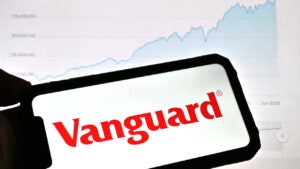7 best S&P 500 index funds in 2024

S&P 500 index funds allow you to invest in the Standard & Poor’s 500 Index, a collection of stocks that includes America’s largest and most successful companies. The S&P 500 index has returned an average of about 10 percent annually over time, making it an attractive investment.
Here are the best S&P 500 index funds, including mutual funds and exchange-traded funds.
Top S&P 500 index funds in 2024
| Fund (ticker) | 5-year annual returns | Expense ratio | Minimum investment |
|---|---|---|---|
| Fidelity ZERO Large Cap Index (FNILX) | 16.1% | 0% | None |
| Vanguard S&P 500 ETF (VOO) | 16.0% | 0.03% | None |
| SPDR S&P 500 ETF Trust (SPY) | 15.9% | 0.095% | None |
| iShares Core S&P 500 ETF (IVV) | 16.0% | 0.03% | None |
| Schwab S&P 500 Index (SWPPX) | 16.0% | 0.02% | None |
| Vanguard 500 Index Fund (VFIAX) | 16.0% | 0.04% | $3,000 |
| Fidelity 500 index fund (FXAIX) | 16.0% | 0.015% | None |
| Source: Morningstar, as of Nov. 8, 2024 | |||
Each of these funds tracks the S&P 500 index, so it’s little surprise that they have basically the same annual return over the same five-year period. The slight difference is due mainly to fees, with the no-fee Fidelity ZERO exchange-traded fund (ETF) outpacing the field by just a tiny bit and the slightly more expensive SPDR S&P 500 fund just a quarter-step behind.
Which S&P 500 index fund should you buy?
Since these funds all track the same index, which S&P 500 fund you should buy comes down to other key factors, such as the expense ratio and the minimum investment.
Any way you see it, these funds are cheap, even if some are cheaper than others. For example, the Vanguard S&P 500 ETF charges expenses of 0.03 percent annually. That amounts to $3 for every $10,000 invested in the fund. None of the other funds is much more expensive. In fact, S&P 500 index funds are some of the market’s cheapest – well below the average fund’s cost.
If you opt for the Fidelity ZERO fund – which charges no expense ratio – you should know that it’s able to do so by avoiding the S&P brand and the associated fees. While the fund effectively tracks this key index – it does a little better, in fact – Fidelity can’t say that it’s an S&P 500 fund.
The funds also compete well on the minimum investment, which may be a key factor for mutual funds but not ETFs. Three of the four mutual funds here have no minimum, while the Vanguard 500 fund has a standard $3,000 minimum. The effective minimum investment for an ETF does not exist, but you may have to buy at least one full share, and ETF prices vary markedly. But if you work with one of the best brokers for fractional shares, you can buy in for just a few dollars.
Finally, it’s worth noting that not all mutual funds may be available at all brokers. For example, the no-cost Fidelity ZERO fund may not appear as an option at most brokers. So if you want that fund specifically, then you may have to open a Fidelity brokerage account.
It’s incredibly easy to buy an S&P 500 index fund, too – here’s how to invest in a fund.
Should you invest in an S&P 500 index fund?
The key draws of an S&P 500 index fund are that investors can earn strong returns over time even while having little investing experience. The S&P 500 contains about 500 stocks of America’s top companies, and each share of an index fund gets investors indirect ownership of all the companies – all at one low annual fee.
These index funds offer immediate diversification, reducing the risk of investing in individual stocks. While investing is never risk-free, the S&P has a strong record over long stretches. Still, in the short term it can be volatile, so experts routinely recommend that investors be able to invest for at least three years and ideally longer in order to achieve attractive returns.
Because of these key advantages, legendary investor Warren Buffett has long advised most investors to invest in an S&P 500 index fund rather than in individual stocks.
Bottom line
S&P 500 index funds are some of the best investments for investors of all skill levels, but they can be especially beneficial for newer investors, who can enjoy solid returns without needing extensive expertise. Investors have a variety of cheap options to attain those tasty returns.
Editorial Disclaimer: All investors are advised to conduct their own independent research into investment strategies before making an investment decision. In addition, investors are advised that past investment product performance is no guarantee of future price appreciation.






